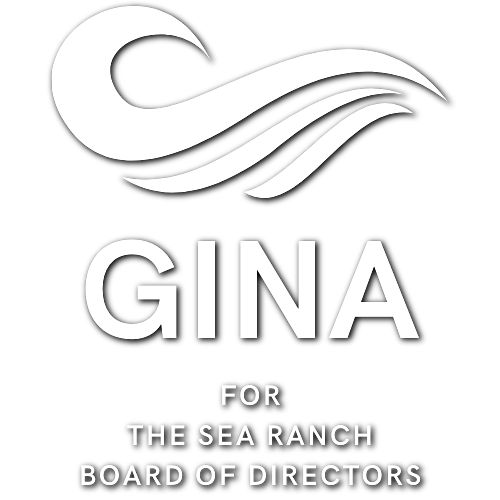
The Sea Ranch Hosting Coalition Questions
I am not seeking in this 2024 election an endorsement from any private interest group. However, I always will discuss issues with any one individual to hear his or her perspective. Members who may have different views than mine may change my mind.
If elected to the Board, I would always solicit the views of members regardless of their individual position or group position in developing policies. In that way, the Board can hear and take into account the views of all members in reaching its decisions.
However, in light of the California Coastal Commission’s (“CCC”) and Sonoma County’s recent regulation of vacation rentals, I would like to respond to your questions.
-
TSR has not imposed rules that would violate any federal or state anti- discriminatory regulations with respect to home ownership, home renting or property access and usage and will not do so in the future.
TSR will help further the goals of the CCC and the County by adapting its rules to those recently adopted by the CCC as recommended by the County. Part of the fundamental reason that the CCC enacted the rules it did enact on 4/11 is that the CCC determined that vacation rentals (the term used by the CCC) have not promoted or increased “general accessibility open to everyone” as defined by the CCC and the Coastal Act. The Coastal Act calls for “lower cost visitor and recreational facilities” *, addressing the concern that coastal recreational opportunities be available to all Californians, regardless of income level.
In addition, the CCC’s mission is broader than accessibility: “The Commission is committed to protecting and enhancing California’s coast and ocean for present and future generations.” †
§ Its public access policies are implemented in a manner that takes into account the need to regulate the time, place, and manner of public access depending on the facts and circumstances in each case including, but not limited to, the following : “. .
a.
(2) The capacity of the site to sustain use and at what level of intensity.
(3) The appropriateness of limiting public access to the right to pass and repass depending on such factors as the fragility of the natural resources in the area and the proximity of the access area to adjacent residential uses.
(4) The need to provide for the management of access areas so as to protect the privacy of adjacent property owners . ..”. ¶
TSRA also takes such policies into account in developing and managing its natural resources and the effects on residential properties of trail, recreational facility, and street access and usage. Privacy is a key consideration.
At the April 11th CCC meeting, the CCC was focused on balancing the right of access with the rights of the community, the rights of property owners in line with the policies outlined above. The CCC recognized that vacation rentals along the Coast do not increase access substantially to the Coast, especially in Sonoma County for “all the people”. At TSR, for example, daily rates average $360+ with over a 60% annual occupancy rate **. Daily rates for ocean front homes with the easiest access to the bluff and beaches can exceed $1000. Lower income individuals are largely precluded from accessing the Coast other than for day trips. In the Coastal area where TSR is located, there are a fewer than 5 hotels and motels that advertise on Expedia.com and few low cost Airbnb’s between Jenner and Gualala.
Access needs to be balanced with community. Commissioner Caryl Hart at the April 11th meeting made this clear stating:
“In my mind community is so important for people who live in these areas. . . I’m a huge Coastal access advocate. I feel so strongly that it shouldn’t only be the wealthy that have access to the Coast. . . When there are opportunities for hotels, Airbnbs, for other types of not-STR type approaches to overnight accommodations. ... all these things are so important for access to the Coast...Overall for myself, ... I don’t agree with the division. . .I don’t like the idea that there’s these very high-end short-term rentals that only very wealthy people can afford and then the rest of the community, it really diminishes the whole concept of what we are trying to do which is provide affordable access to the Coast.” ††
Commissioner Hart also stressed that the CCC’s focus on protecting the environment and the community were even more important in rural areas than in urban areas. The reduction in housing stock levels in part due to the increase in the number of vacation rentals was more damaging to rural communities than urban areas. TSR is situated in a rural area with large sheep ranches and forests surrounding it and small towns like Gualala and Point Arena. The negative effect on our community of high-priced homes and limited long-term rentals has, as we all know, been devastating.
As I’ve said many times, I support rentals at TSR. I and my family would not have been able to visit TSR if we could not have rented. As a result, I essentially grew up at TSR since we spent many weekends here and almost every holiday. If we had had to pay rental rates equal to current rates adjusted for time, it would have been impossible for my family to visit TSR as frequently.
Therefore, I do think we should have a properly regulated vacation rental region. However, TSRA definitely is not in control, the Coastal Commission and Sonoma County are.
Finally, neither TSRA nor the CCC regulate vacation rental rate levels or establish or approve eligibility standards for moderate or low income families with respect to overnight accommodations. §§ As a result, individual members who rent their homes privately can decide on their own daily rental rates so as to accommodate lower income people and provide more affordable access the Coast or to shift to long term rentals to increase housing stock for local workers.
As noted at the CCC April 11 meeting, TSR represents approximately 50% of the Sonoma County rental market, ¶¶ As a result, TSRA and both renting and non-renting members can make a significant contribution to the goal of ensuring general accessibility of the coast as well as developing ways to enable low- and moderate-income individuals to become part of the community.
Footnotes:
* PUBLIC RESOURCES CODE – PR C DIVISION 20. CALIFORNIA COASTAL ACT; CHAPTER 3. Coastal Resources Planning and Management Policies [30200 - 30270]; ARTICLE 2. Public Access Section 30213 (Amended by Ch. 1075, Stats. 1978).
† Coastal Commission @ https://www.coastal.ca.gov/whoweare.html.
§ PUBLIC RESOURCES CODE – PRC DIVISION 20. CALIFORNIA COASTAL ACT; CHAPTER 3. Coastal Resources Planning and Management Policies [30200 - 30270]; ARTICLE 2. Public Access Section 30210 (Amended by Ch. 1075, Stats. 1978).
¶ PUBLIC RESOURCES CODE – PRC DIVISION 20. CALIFORNIA COASTAL ACT; CHAPTER 3. Coastal Resources Planning and Management Policies [30200 - 30270]. ARTICLE 2. Implementation of Public Access Policies; legislative intent Section 30214 (Added by Ch. 919, Stats. 1979. Amended by Ch. 285, Stats. 1991).
** AirDNA @ www.airdna.co. through 9/23.
†† 3:14:3 6 – 3:18:14 minute mark in CCC meeting of 4/11.
§§ PUBLIC RESOURCES CODE – PRC DIVISION 20. CALIFORNIA COASTAL ACT; CHAPTER 3. Coastal Resources Planning and Management Policies [30200 - 30270]; ARTICLE 2. Public Access Section 30213 (Senate Bill 1581 (Ch. 1087 Statutes of 1980)) (Amended by Ch. 1191, Stats. 1979; Ch. 1087, Stats. 1980; Ch. 1007, Stats. 1981; Ch. 285, Stats. 1991)
¶¶ 3:40:10 minute mark in CCC meeting of 4/11.
-
TSR’s rules do not incorporate the terms of the new regulations adopted by the CCC. TSR must reconcile its applicable rules and regulations to conform to Sonoma’s regulations. Whether TSR can adopt additional or more stringent regulations is not clear in light of California’s pre-emption jurisprudence and would most likely have to be determined on a case-by-case basis.
-
Before April 11, neither Sonoma nor TSR had exercised meaningful regulatory oversight of the Coast’s flourishing multimillion dollar vacation rental business and, in the process, has not protected local residents, wildlife, local housing and the Coast itself to the standards certainly required of the CCC and the Coastal Act.
The CCC has now officially supported the regulation of vacation rentals In regions falling within the Coastal zones by adopting the regulations on April 11. In fact, the vote for the adoption of the regulations was 6 in favor and 1 abstention.
Many coastal communities have had a similar set of vacation rental rules in place for years. They work; they preserve residential neighborhoods; they lower the rates of common nuisances; they reduce disputes; they raise property values. Indeed, residents of those regulated communities, including owners who rent out their houses, support their vacation rental regulations. They have not been repealed. TSR has the opportunity now to ensure that its rules conform to these rules which have been so successful in other communities along the Coast.
TSR also has the opportunity, as do other communities, to see how the new regulations might encourage more long-term rentals which permit more workers to live closer to TSR and increase permanent diversity of the area.
The challenge will be to reconcile TSR rules and regulations to conform to the ultimate regulations that will be adopted in the future. Working to that end will also present an exciting opportunity.
-
We should acknowledge that the Restrictions prohibit businesses at TSR and allow rentals only “from time to time.” * I support Sonoma County’s prohibition on ownership of multiple properties as full-time rental investments.
Footnote:
* Sea Ranch Restrictions, Article 3, Land Classifications, Use and Restrictive Covenants, Section 3.02(c)(3).
-
As with any issue, TSRA and the Board members should interact with all members equally. In the case where a subset of the membership has a particular view, the Board and TSRA should listen to that point of view as well as any other point of view of the membership as well as staff. This should be done publicly and comprehensively. The Board and/or TSRA should establish task forces or working groups comprised of members with different points of view to do the necessary research to provide informed recommendations. No one member or group of members should be the only voice, even if they attempt to claim that they speak as one voice for others.

